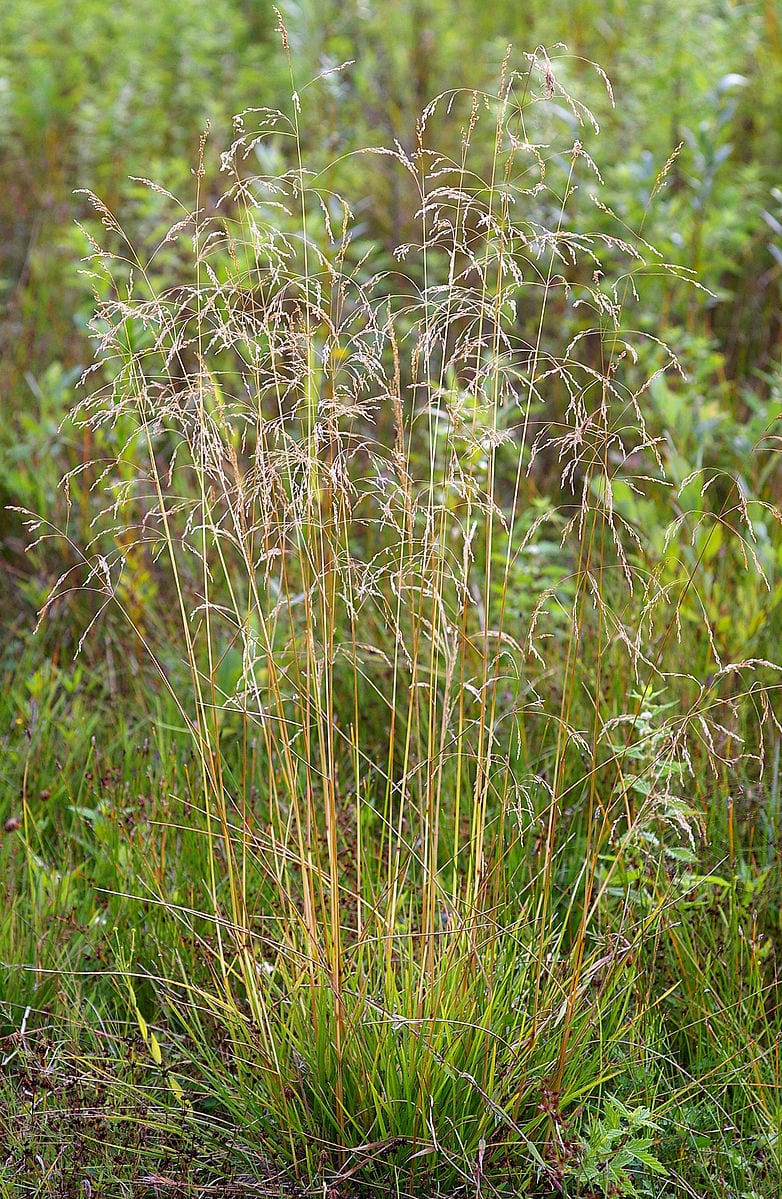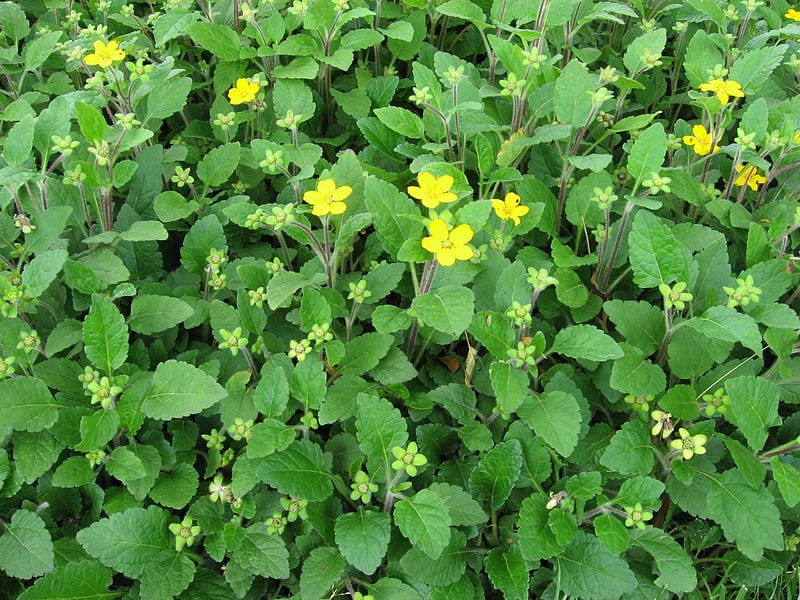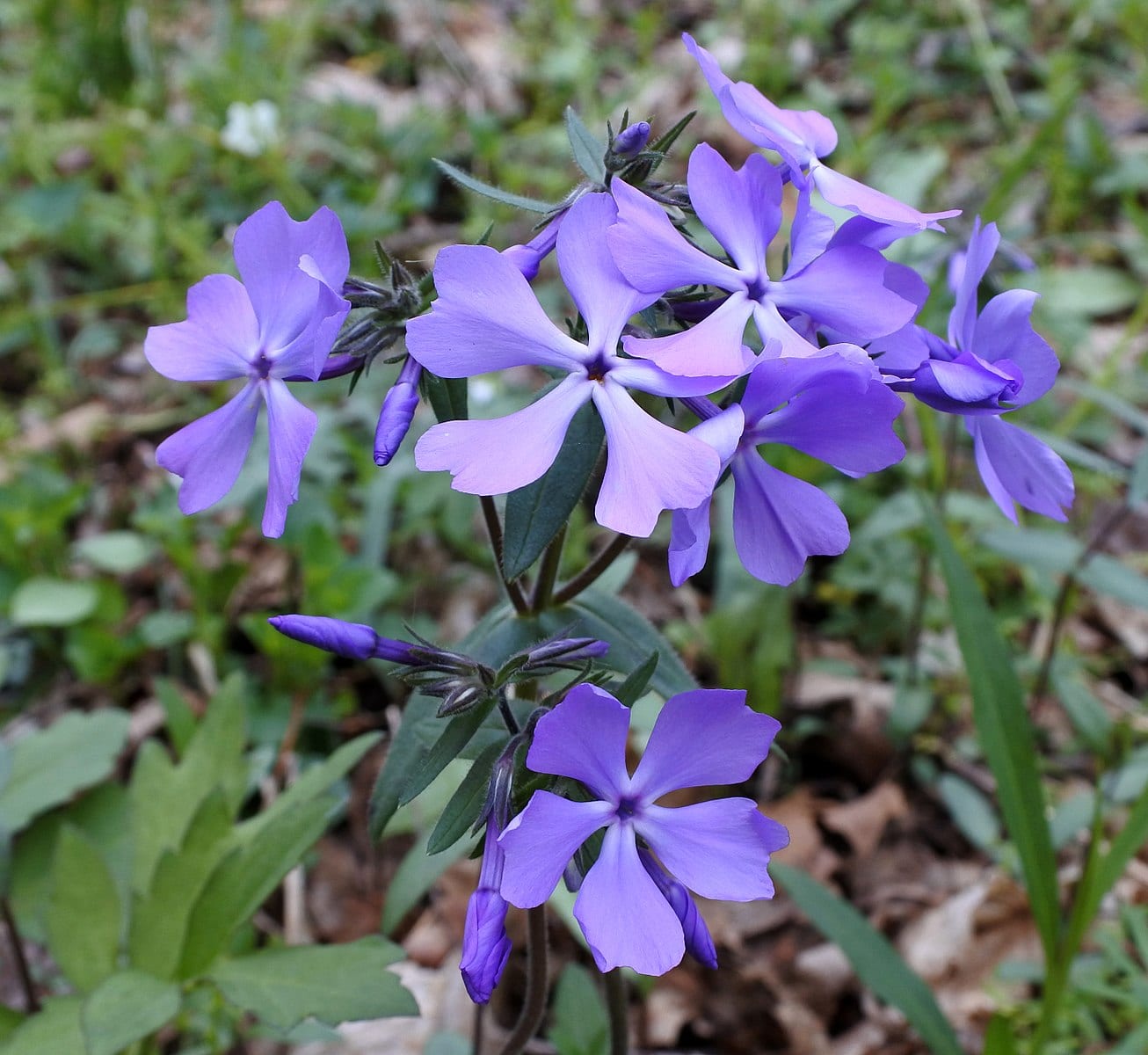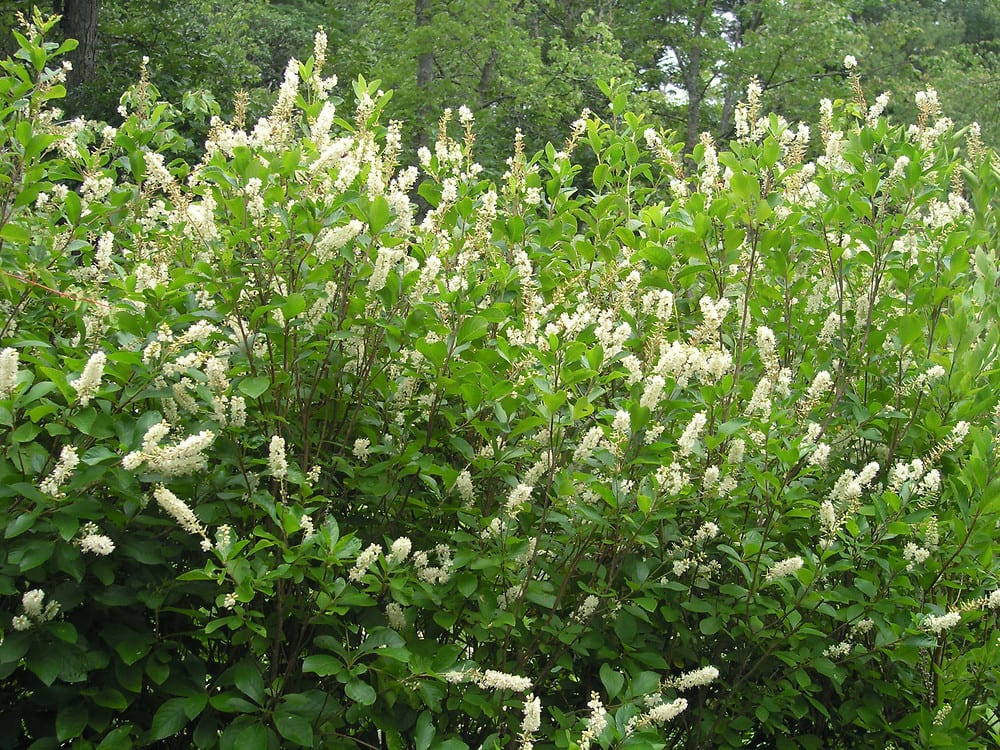I live in Zone 6 just outside of Boston, MA. Our tiny front yard faces north and is mostly shaded by the three-story house. To make matters worse, there is a street Norway Maple on the other side of the sidewalk, so the yard is dry. The turf grass currently planted cannot cope, and there are many bare patches, even with regular overseeding. I tried Pennsylvania sedge as an experiment, and that seems to be doing well, but I don’t think I want the whole yard planted with sedge, although it’s an option for part of the yard. What native plants could we plant up against the foundation that don’t get too high and perhaps could replace the turf? The yard is too small (21’ x 10’) for a tree or too-large shrubs.
Small yards with shade and drought can feel particularly challenging, but there are still quite a few plants that provide interest with texture and blooms. There are also many dwarf cultivars of shrubs and trees that are great options for small spaces.
The dryness of Norway maples is more a problem for establishing well-chosen plants than for the long term. Once established, the plants listed below are reasonably drought tolerant. Make sure the plants are watered regularly the first year and in times of severe drought. After planting, provide a good topdressing of compost and moisture-retentive mulch, like shredded leaves, wood chips, or finely-ground bark mulch.
Grass-like
- Carex plantaginea – seersucker sedge
- Carex platyphylla – sedge
- Deschampsia cespitosa – hairgrass
- Deschampsia flexuosa – wavy hairgrass
Ferns
- Athyrium felix-femina – lady fern
- Dryopteris goldiana – leather wood fern
- Dryopteris marginalis – Goldie’s wood fern
- Osmunda regalis – royal fern
- Polypodium virginianum – polypodi fern
- Polystichum aristichoides – Christmas fern
Perennials
- Aconitum ucinatum – wild monkshood
- Actaea pacypoda – doll’s eyes
- Actaea podocarpa – mountain bugbane or black cohosh
- Actaea rubifolia – Appalachian bugbane
- Allium cernuum – nodding onion
- Allium tricoccum – wild leek or ramps
- Anemone canadensis – Canada anemone or meadow anemone
- Anemone virginiana – tall thimbleweed
- Aruncus dioicus – goat’s beard
- Chrysogonum virginianum – green and gold
- Conoclinium coelestinum – blue mist flower
- Dicentra eximia – wild bleeding heart
- Galactic urceolata – beetleweed
- Gaultheria procumbens – wintergreen
- Geum fragariodes – barren strawberry
- Gillenia trifoliata – Bowman’s root
- Heuchera americana – alumroot
- Heuchera villosa – hairy alumroot
- Hexastylis arifolia – arrow-leaf ginger
- Maianthemum racemosa – Solomon’s plume
- Oenethera fruticosa – sundrops
- Pachysandra procumbens – Allegheny pachysandra
- Phlox divaricata – woodland phlox
- Phlox stolonifera – creeping phlox
- Polygonatum biflorum – Solomon’s seal
- Prostartes maculatum – nodding mandarin
- Scutellaria incana – downy skullcap
- Thalictrum dioicum – meadow-rue
- Tiarella cordifolia – foamflower
- Uvullaria grandiflora – merrybells
Trees & Shrubs
- Aronia arbutifolia ‘Brilliantissima’ (stays shorter in shade) – red chokeberry
- Aronia melanocarpa ‘Low Scape Mound’ – black chokeberry
- Cercis canadensis ‘Ace of Hearts’ – dwarf Eastern redbud
- Cercis canadensis ‘Covey’ or ‘Lavender Twist’ – weeping Eastern redbud
- Clethra alnifolia ‘Hummingbird’ – summersweet
- Cornus florida ‘Pygmaea’ – dwarf flowering dogwood
- Cornus florida ‘Red Pygmy’ – red dwarf flowering dogwood
- Gaylussacia brachycera – box huckleberry
- Itea virginiana ‘Little Henry’- sweetspire
- Magnolia virginiana ‘Sweet Thing’ or ‘Perry Paige’ – dwarf sweet bay magnolia
- Viburnum acerfolium – maple-leaf viburnum
-
~ Amy Nyman, Ruby Leaf Design, Worcester, MA
ELA members have spent hundreds of hours learning the best ecological solutions to problems in the landscape. You can benefit from all that accumulated knowledge by posing a question to our experts. If you are stumped by a problem in your landscape or are looking for a second opinion on a potential solution, ask ELA’s Eco-Pros. Send your question to ela_new@verizon.net. And if you need additional help, refer to the listing of ELA Professionals.
***
Each author appearing herein retains original copyright. Right to reproduce or disseminate all material herein, including to Columbia University Library’s CAUSEWAY Project, is otherwise reserved by ELA. Please contact ELA for permission to reprint.
Mention of products is not intended to constitute endorsement. Opinions expressed in this newsletter article do not necessarily represent those of ELA’s directors, staff, or members.





